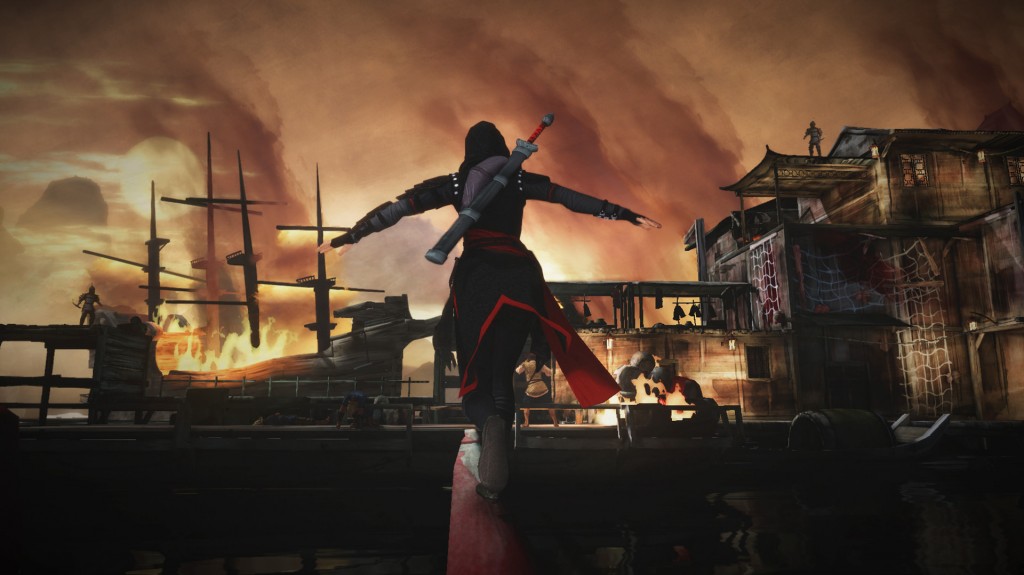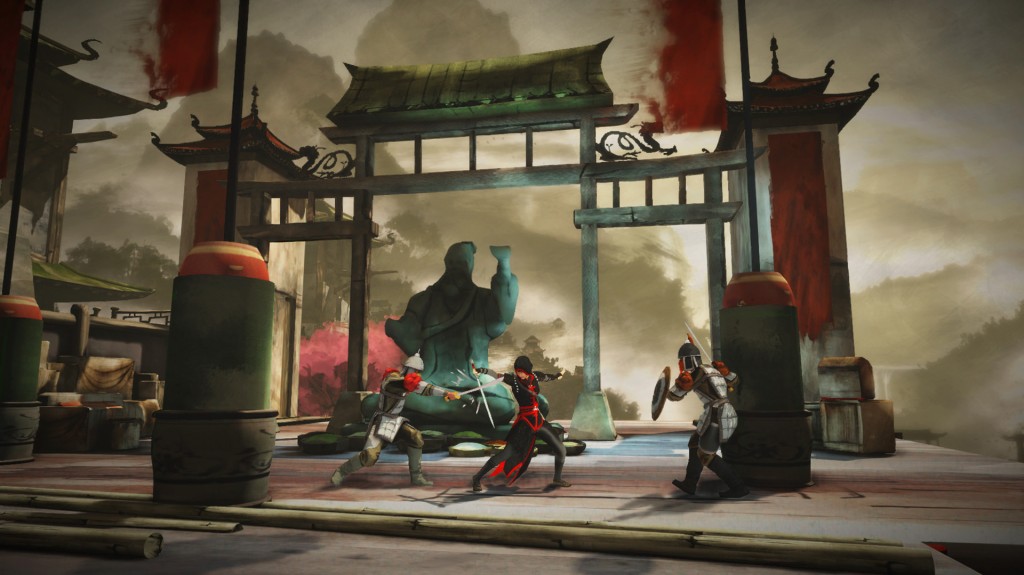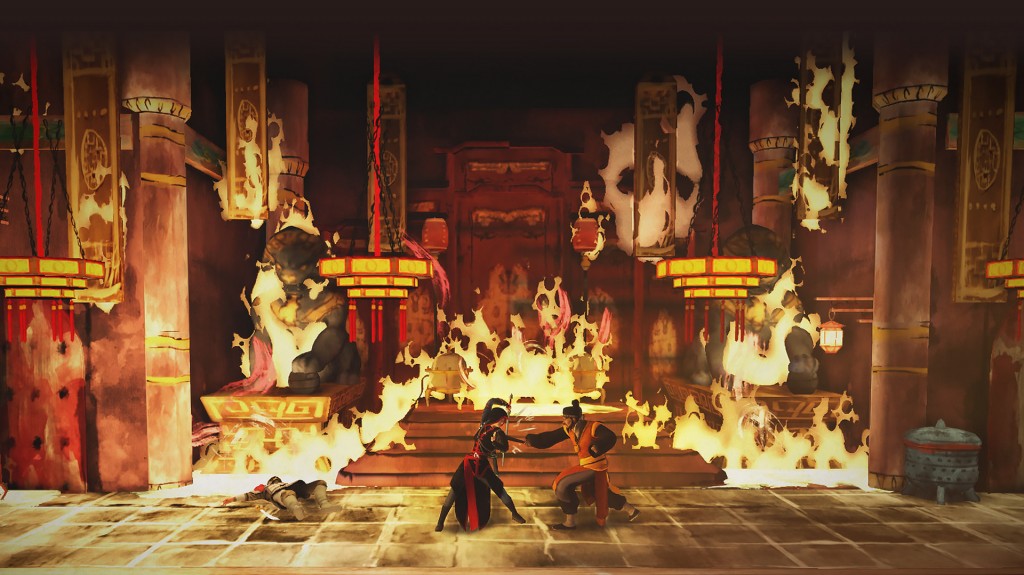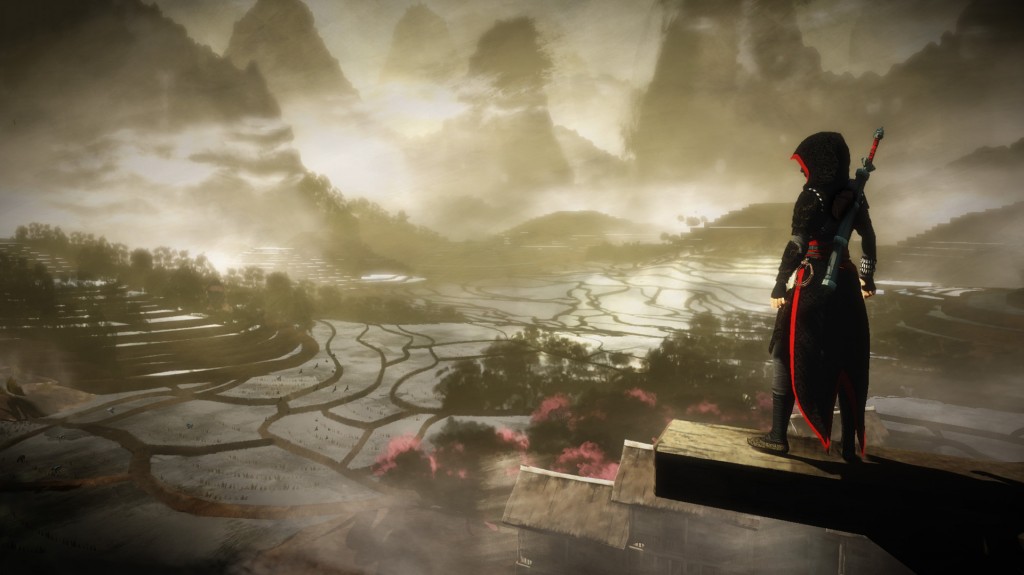
China, as it turns out, is a perfect setting for an Assassin’s Creed game. While Assassin’s Creed Chronicles: China plays quite unlike other titles in the franchise, the 2D spinoff retains the spirit and feel of the world. Gone are the open world and filler side content, and here to stay are the stealth kills, free form exploration and templar-assassin lore. I’ll admit, I’ve played enough Assassin’s Creed by now that I’m feeling quite burned out on the series, but even with the fatigue, there are enough new ideas present here to make it worth a play.
The stealth gameplay in Assassin’s Creed Chronicles: China works well, and when it clicks, it’s a lot of fun. Enemies all have clearly defined vision cones and patrol routes, and you have in your arsenal a wide bevy of distraction tools to help you move past them undetected. You can whistle and draw a guard to your current location while you sneak around, you can throw a “noise dart” and draw a guard’s attention where you want it, or you can just throw a firecracker directly into a guard’s face to temporarily stun him while you dash past. There are plenty of hiding spots to remain undetected, and the dance from alcove to alcove while distracting and disarming guards is exciting and plays quite well.
One of the most important things to me in the stealth genre is that the rules these games play by need to be well-defined. Nothing frustrates me more than being “detected” and having to restart a mission, especially when I felt like I was doing everything correctly and had no way of knowing that a certain enemy could behave the way he did. The rule set that the guards play by in Assassin’s Creed Chronicles: China is very well-defined, though it does lead to some very, very dumb enemy AI. It can be so clueless, in fact, that it breaks the immersion.

There are instances in which you can be standing right behind two guards that are having a conversation, almost touching one of the guards in the back and basically waving at the other guard that is facing you, and they can’t see you (due to the in-game rule that conversing guards are always unaware). The 2D nature of the game leads to some silly circumstances as well, like standing just beyond a guard’s vision cone and having to assume that the guard can’t see you because they magically just can’t see beyond ten feet. If you fall within that ten-foot vision cone, then look out, alarms will go off and you’ll basically be dead. Stand just beyond at that eleventh foot, and you might as well be invisible. Again, I actually appreciated this aspect of the game as opposed to finding it distracting or problematic, but it does lend the adventure to feeling more like a puzzle game instead of a true stealth experience.
When things go badly in Assassin’s Creed Chronicles: China, they do so in a hurry, and combat is definitely not your friend. Most enemies will kill you in a few hits, and while you might be able to deal with a one-on-one encounter, much more than that typically means death. This tension would be fine if the combat were more interesting, but for all the effort put into the stealth elements of the game, it seems combat was relegated to the “less important” bin. The entire concept of fighting another enemy in Assassin’s Creed Chronicles: China revolves around timing a block and then lunging with as many hits as you can before repeating. Occasionally you’ll need to dodge projectiles or use a heavy attack to break a shield, but this is really about it. I found that if I was discovered I would often rather let the enemy kill me, just because I had so much more fun figuring out how to silently make my way through the encounter than I did using force.

There is a story here that ties into the larger Assassin’s Creed lore, but at this point, it’s hard to care. There was a point when I was truly invested in the world that Ubisoft had created and I was intrigued by the templar-assassin conflict, but now that it’s abandoned the modern-day storyline, there’s little tying the plot points of the games together. The cutscenes are of the comic-book “talking heads” variety, and there are even brief cameos from Ezio Auditore himself, but even this isn’t anywhere near enough to pull me back in.
One aspect that Assassin’s Creed Chronicles: China gets absolutely right is in the visual style. Imperial China is beautifully realized with a watercolor aesthetic that pops at every turn. Each assassination is accompanied by a spurt of red paint that jets out from the enemy in streaks and splotches, and the backgrounds look like a canvas come to life. The different gameplay elements like vision cones and awareness bubbles are all clear, and entering eagle vision provides an immediately digestible picture of guard routes, hidden alcoves and cautionary items that will give your location away (like dogs and bird cages). The places where the new protagonist Shao Jun can traverse from foreground to background and around the sides of buildings are also clearly indicated with red paint, giving you a clear signal of where to go and how to get there. It’s an impressively clean look that finds a nice balance of both beauty and function.

Assassin’s Creed Chronicles: China is interesting, if maybe a little repetitive, and a nice change of pace for the franchise. It retains the feel of Assassin’s Creed in a bite-sized package, and delivers well on the core ideas of the series: striking fast and disappearing through the shadows. The story is inconsequential and the combat is really rough, but for a franchise facing fatigue, the changes offered here are welcome, and recommended for all who haven’t given up on Assassin’s Creed quite yet.
Pros: Well-defined stealth gameplay, watercolor art style, Assassin’s Creed feel
Cons: Combat is clunky, repetitive structure, braindead AI



















